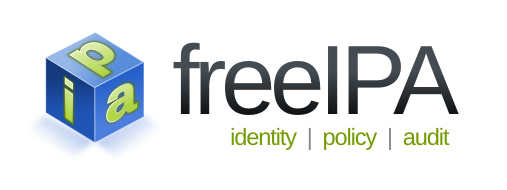Installing and configuring a FreeIPA server on CentOS 7.


On this post, we are going to install a FreeIPA server on CentOS 7. The main function of a FreeIPA server is to provide centralized identity and authentication for Linux/UNIX networked environments. FreeIPA is the upstream version of Red Hat iDM and a combination of the following :
- 389 Directory Server
- MIT Kerberos
- NTP
- DNS
- Dogtag (Certificate System)
Configuring the Host###
The first thing that we are going to do is to prepare the CentOS 7 server to run FreeIPA. In order to do this, we are going to set the IP address on the system, In our case the host IP is 192.168.1.2/24.
After that, we are going to set the hostname for the machine and create an entry for it on /etc/host.
Setting the hostname (ipa.quebolon.local):
[root@ipa ~]# hostnamectl set-hostname ipa.quebolon.local
Adding the host entry:
[root@ipa ~]# echo "192.168.1.2 ipa.quebolon.local ipa" >> /etc/hosts
Installing FreeIPA and doing basic configuration###
The next step is to install FreeIPA, the name of the rpm for it is ipa-server and this will resolve all the dependencies. We also are going to install bind-dyndb-ldap to be able to manage DNS. To do this:
[root@ipa ~]# yum install ipa-server bind-dyndb-ldap ipa-server-dns -y
At this point we are ready to run the FreeIPA installation, we are going to include the switch --setup-dns to configure the DNS server as part of the installation:
[root@ipa ~]# ipa-server-install --setup-dns
Here is how this configuration will look by running the previous command:
[root@ipa ~]# ipa-server-install --setup-dns
The log file for this installation can be found in /var/log/ipaserver-install.log
==============================================================================
This program will set up the IPA Server.
This includes:
* Configure a stand-alone CA (dogtag) for certificate management
* Configure the Network Time Daemon (ntpd)
* Create and configure an instance of Directory Server
* Create and configure a Kerberos Key Distribution Center (KDC)
* Configure Apache (httpd)
* Configure DNS (bind)
To accept the default shown in brackets, press the Enter key.
Enter the fully qualified domain name of the computer
on which you're setting up server software. Using the form
<hostname>.<domainname>
Example: master.example.com.
Server host name [ipa.quebolon.local]: [ENTER]
Warning: skipping DNS resolution of host ipa.quebolon.local
The domain name has been determined based on the host name.
Please confirm the domain name [quebolon.local]:[ENTER]
The kerberos protocol requires a Realm name to be defined.
This is typically the domain name converted to uppercase.
Please provide a realm name [QUEBOLON.LOCAL]: [ENTER]
Certain directory server operations require an administrative user.
This user is referred to as the Directory Manager and has full access
to the Directory for system management tasks and will be added to the
instance of directory server created for IPA.
The password must be at least 8 characters long.
Directory Manager password: [ENTER PASSWORD]
Password (confirm): [ENTER PASSWORD]
The IPA server requires an administrative user, named 'admin'.
This user is a regular system account used for IPA server administration.
IPA admin password: [ENTER PASSWORD]
Password (confirm): [ENTER PASSWORD]
Existing BIND configuration detected, overwrite? [no]: yes
Do you want to configure DNS forwarders? [yes]: yes
Enter an IP address for a DNS forwarder, or press Enter to skip: 8.8.8.8
DNS forwarder 8.8.8.8 added. You may add another.
Enter an IP address for a DNS forwarder, or press Enter to skip: 8.8.4.4
DNS forwarder 8.8.4.4 added. You may add another.
Enter an IP address for a DNS forwarder, or press Enter to skip:
Checking DNS forwarders, please wait ...
Do you want to configure the reverse zone? [yes]: yes
Please specify the reverse zone name [1.168.192.in-addr.arpa.]:
Using reverse zone(s) 1.168.192.in-addr.arpa.
The IPA Master Server will be configured with:
Hostname: ipa.quebolon.local
IP address(es): 192.168.1.2
Domain name: quebolon.local
Realm name: QUEBOLON.LOCAL
BIND DNS server will be configured to serve IPA domain with:
Forwarders: 8.8.8.8, 8.8.4.4
Reverse zone(s): 1.168.192.in-addr.arpa.
Continue to configure the system with these values? [no]: yes
The following operations may take some minutes to complete.
Please wait until the prompt is returned.
Configuring NTP daemon (ntpd)
[1/4]: stopping ntpd
[2/4]: writing configuration
[3/4]: configuring ntpd to start on boot
[4/4]: starting ntpd
Done configuring NTP daemon (ntpd).
Configuring directory server (dirsrv). Estimated time: 1 minute
[1/42]: creating directory server user
[2/42]: creating directory server instance
[3/42]: adding default schema
[4/42]: enabling memberof plugin
[5/42]: enabling winsync plugin
[6/42]: configuring replication version plugin
[7/42]: enabling IPA enrollment plugin
[8/42]: enabling ldapi
[9/42]: configuring uniqueness plugin
[10/42]: configuring uuid plugin
[11/42]: configuring modrdn plugin
[12/42]: configuring DNS plugin
[13/42]: enabling entryUSN plugin
[14/42]: configuring lockout plugin
[15/42]: creating indices
[16/42]: enabling referential integrity plugin
[17/42]: configuring certmap.conf
[18/42]: configure autobind for root
[19/42]: configure new location for managed entries
[20/42]: configure dirsrv ccache
[21/42]: enable SASL mapping fallback
[22/42]: restarting directory server
[23/42]: adding default layout
[24/42]: adding delegation layout
[25/42]: creating container for managed entries
[26/42]: configuring user private groups
[27/42]: configuring netgroups from hostgroups
[28/42]: creating default Sudo bind user
[29/42]: creating default Auto Member layout
[30/42]: adding range check plugin
[31/42]: creating default HBAC rule allow_all
[32/42]: adding entries for topology management
[33/42]: initializing group membership
[34/42]: adding master entry
[35/42]: initializing domain level
[36/42]: configuring Posix uid/gid generation
[37/42]: adding replication acis
[38/42]: enabling compatibility plugin
[39/42]: activating sidgen plugin
[40/42]: activating extdom plugin
[41/42]: tuning directory server
[42/42]: configuring directory to start on boot
Done configuring directory server (dirsrv).
Configuring certificate server (pki-tomcatd). Estimated time: 3 minutes 30 seconds
[1/27]: creating certificate server user
[2/27]: configuring certificate server instance
[3/27]: stopping certificate server instance to update CS.cfg
[4/27]: backing up CS.cfg
[5/27]: disabling nonces
[6/27]: set up CRL publishing
[7/27]: enable PKIX certificate path discovery and validation
[8/27]: starting certificate server instance
[9/27]: creating RA agent certificate database
[10/27]: importing CA chain to RA certificate database
[11/27]: fixing RA database permissions
[12/27]: setting up signing cert profile
[13/27]: setting audit signing renewal to 2 years
[14/27]: restarting certificate server
[15/27]: requesting RA certificate from CA
[16/27]: issuing RA agent certificate
[17/27]: adding RA agent as a trusted user
[18/27]: authorizing RA to modify profiles
[19/27]: configure certmonger for renewals
[20/27]: configure certificate renewals
[21/27]: configure RA certificate renewal
[22/27]: configure Server-Cert certificate renewal
[23/27]: Configure HTTP to proxy connections
[24/27]: restarting certificate server
[25/27]: migrating certificate profiles to LDAP
[26/27]: importing IPA certificate profiles
[27/27]: adding default CA ACL
Done configuring certificate server (pki-tomcatd).
Configuring directory server (dirsrv). Estimated time: 10 seconds
[1/3]: configuring ssl for ds instance
[2/3]: restarting directory server
[3/3]: adding CA certificate entry
Done configuring directory server (dirsrv).
Configuring Kerberos KDC (krb5kdc). Estimated time: 30 seconds
[1/10]: adding sasl mappings to the directory
[2/10]: adding kerberos container to the directory
[3/10]: configuring KDC
[4/10]: initialize kerberos container
[5/10]: adding default ACIs
[6/10]: creating a keytab for the directory
[7/10]: creating a keytab for the machine
[8/10]: adding the password extension to the directory
[9/10]: starting the KDC
[10/10]: configuring KDC to start on boot
Done configuring Kerberos KDC (krb5kdc).
Configuring kadmin
[1/2]: starting kadmin
[2/2]: configuring kadmin to start on boot
Done configuring kadmin.
Configuring ipa_memcached
[1/2]: starting ipa_memcached
[2/2]: configuring ipa_memcached to start on boot
Done configuring ipa_memcached.
Configuring ipa-otpd
[1/2]: starting ipa-otpd
[2/2]: configuring ipa-otpd to start on boot
Done configuring ipa-otpd.
Configuring the web interface (httpd). Estimated time: 1 minute
[1/19]: setting mod_nss port to 443
[2/19]: setting mod_nss protocol list to TLSv1.0 - TLSv1.2
[3/19]: setting mod_nss password file
[4/19]: enabling mod_nss renegotiate
[5/19]: adding URL rewriting rules
[6/19]: configuring httpd
[7/19]: configure certmonger for renewals
[8/19]: setting up ssl
[9/19]: importing CA certificates from LDAP
[10/19]: setting up browser autoconfig
[11/19]: publish CA cert
[12/19]: creating a keytab for httpd
[13/19]: clean up any existing httpd ccache
[14/19]: configuring SELinux for httpd
[15/19]: create KDC proxy user
[16/19]: create KDC proxy config
[17/19]: enable KDC proxy
[18/19]: restarting httpd
[19/19]: configuring httpd to start on boot
Done configuring the web interface (httpd).
Applying LDAP updates
Upgrading IPA:
[1/9]: stopping directory server
[2/9]: saving configuration
[3/9]: disabling listeners
[4/9]: enabling DS global lock
[5/9]: starting directory server
[6/9]: upgrading server
[7/9]: stopping directory server
[8/9]: restoring configuration
[9/9]: starting directory server
Done.
Restarting the directory server
Restarting the KDC
Configuring DNS (named)
[1/12]: generating rndc key file
WARNING: Your system is running out of entropy, you may experience long delays
[2/12]: adding DNS container
[3/12]: setting up our zone
[4/12]: setting up reverse zone
[5/12]: setting up our own record
[6/12]: setting up records for other masters
[7/12]: adding NS record to the zones
[8/12]: setting up CA record
[9/12]: setting up kerberos principal
[10/12]: setting up named.conf
[11/12]: configuring named to start on boot
[12/12]: changing resolv.conf to point to ourselves
Done configuring DNS (named).
Configuring DNS key synchronization service (ipa-dnskeysyncd)
[1/7]: checking status
[2/7]: setting up bind-dyndb-ldap working directory
[3/7]: setting up kerberos principal
[4/7]: setting up SoftHSM
[5/7]: adding DNSSEC containers
[6/7]: creating replica keys
[7/7]: configuring ipa-dnskeysyncd to start on boot
Done configuring DNS key synchronization service (ipa-dnskeysyncd).
Restarting ipa-dnskeysyncd
Restarting named
Restarting the web server
==============================================================================
Setup complete
Next steps:
1. You must make sure these network ports are open:
TCP Ports:
* 80, 443: HTTP/HTTPS
* 389, 636: LDAP/LDAPS
* 88, 464: kerberos
* 53: bind
UDP Ports:
* 88, 464: kerberos
* 53: bind
* 123: ntp
2. You can now obtain a kerberos ticket using the command: 'kinit admin'
This ticket will allow you to use the IPA tools (e.g., ipa user-add)
and the web user interface.
Be sure to back up the CA certificates stored in /root/cacert.p12
These files are required to create replicas. The password for these
files is the Directory Manager password
At this point, the software is installed and basic configuration is done. Now we need to open the ports on the firewall required by FreeIPA. To do that:
[root@ipa ~]# for var in ntp http https ldap ldaps kerberos kpasswd
do
firewall-cmd --permanent --add-service=$i
done
After this we are going to use authconfig to guarantee that the user directories are created and enable sssd:
[root@ipa ~]# authconfig --enablemkhomedir --update
[root@ipa ~]# chkconfig sssd on
Reboot the system:
[root@ipa ~]# systemctl reboot
After this you should be able to access the FreeIPA web console from any console:

Now you should be able to start configuring the IPA server. Feel free to check the official product documentation at http://www.freeipa.org/page/Documentation .
